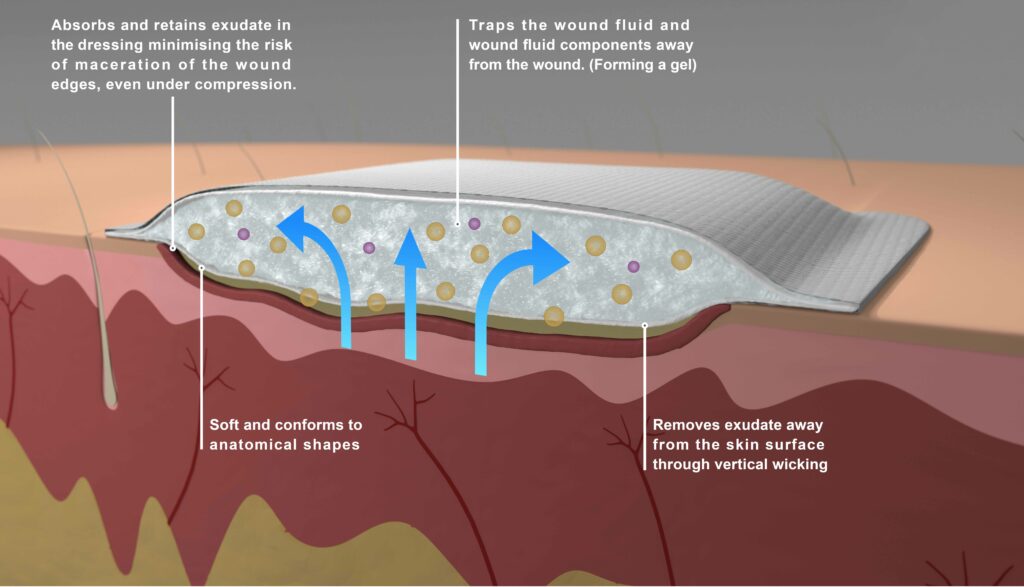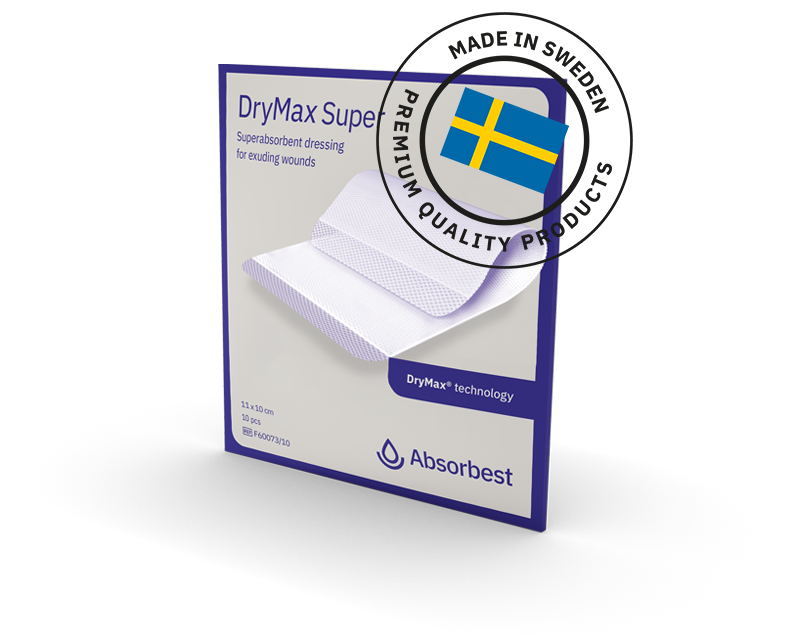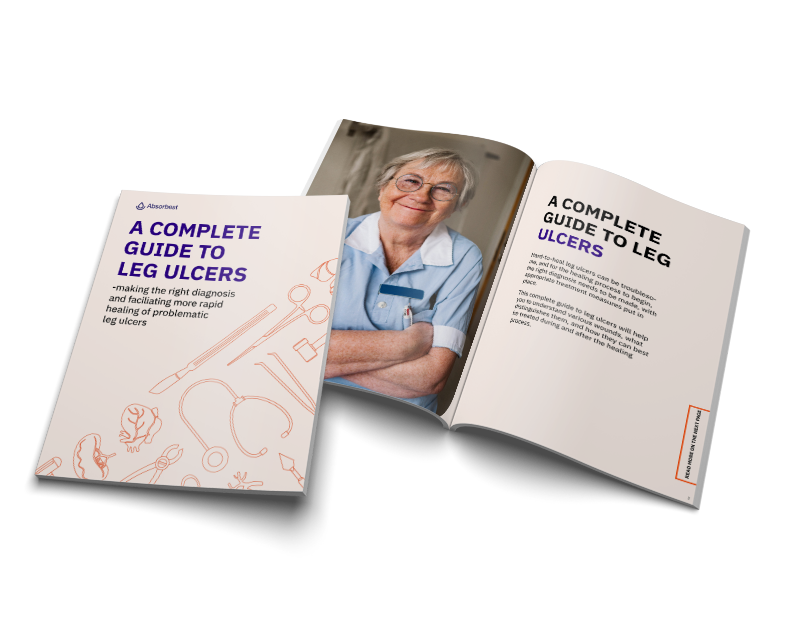Unlike simpler absorbent dressings, which may release fluid under pressure (similar to a dishcloth), superabsorbent dressings with retention properties keep wound fluid securely locked in. This gives you multiple advantages:
Maintains a moist, warm healing environment that supports tissue repair
Prevents peri-wound maceration caused by fluid leakage
Reduces the risk of bacterial transferMihutescu et al, A comparison of bacterial sequestration in SAP dressings, Poster at Wounds UK 2022.
Minimises the need for frequent dressing changes.
Retention also provides reassurance to healthcare professionals. However, it is essential to remember that dressings do not heal wounds on their own, they create optimal conditions for healing Johan P.E. Junker, Rami A. Kamel, E.J. Caterson, and Elof Eriksson. Clinical Impact Upon Wound Healing and Inflammation in Moist, Wet, and Dry Environments. Adv Wound Care. 2013 Sep.. The underlying cause of the exudate (such as oedema or infection) must be addressed for successful wound management.
Wound exudate is a natural and essential component of healing. It keeps the wound moist, contains nutrients, proteins, and growth factors, and supports new tissue formation. However, excessive exudate in hard-to-heal wounds can be problematic—it often contains high levels of inflammatory molecules, prolonging inflammation and further increasing fluid production【Expert working group, Int Wound J, 2008】.
Superabsorbent dressings with strong absorption and retention properties help reduce the risk of transferring exudate-containing bacteria back to the wound bedMihutescu et al, A comparison of bacterial sequestration within three types of wound dressing, Poster at Wounds UK 2022..
Achieving optimal moisture balance is central to moist wound healing and can accelerate recovery. Managing exudate effectively depends on assessing the wound stage and selecting the proper dressingJackie Stephen-Haynes, Managing exudate and the key requirements of absorbent dressings, British Journal of Community Nursing Vol. 16..
![]()
Effective wound management demands adaptability and a thorough understanding of both the healing process and the properties of dressings. An ideal superabsorbent dressing for exuding wounds shouldJackie Stephen-Haynes, Managing exudate and the key requirements of absorbent dressings, British Journal of Community Nursing Vol. 16.:

Excess and uncontrolled wound exudate can slow healing, hinder clinical practice, andnegatively impact the patient’s quality of life. It also increases avoidable costs for healthcare systemsMark Collier, A clinical observational case series evaluation of a superabsorbent dressing on exudating wounds, British Journal of Nursing, 2024, Vol 33..
Superabsorbent wound dressings with reliable retention properties are a valuable option for managing exuding, hard-to-heal wounds—simplifying care for clinicians and improving patient outcomes.

Discover how a superabsorbent dressing can lock in exudate, creating an ideal healing environment that supports clinicians delivering quality care.

This complete guide to leg ulcers will help you understand the various types of wounds, what distinguishes them, and how they can best be treated during and after the healing process.
Mihutescu et al, A comparison of bacterial sequestration in SAP dressings, Poster at Wounds UK 2022.
Johan P.E. Junker, Rami A. Kamel, E.J. Caterson, and Elof Eriksson. Clinical Impact Upon Wound Healing and Inflammation in Moist, Wet, and Dry Environments. Adv Wound Care. 2013 Sep: 348–356.
Expert working group; Satellite expert working group. Wound exudate and the role of dressings. A consensus document. International Wound Journal,
March, 2008.
Jackie Stephen-Haynes, Managing exudate and the key requirements of absorbent dressings, British Journal of Community Nursing Vol. 16.
Mark Collier, A clinical observational case series evaluation of a superabsorbent dressing on exudating wounds, British Journal of Nursing, 2024, Vol 33.